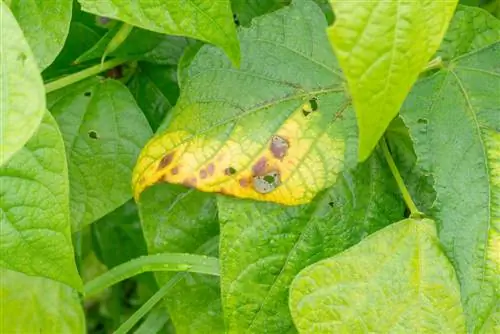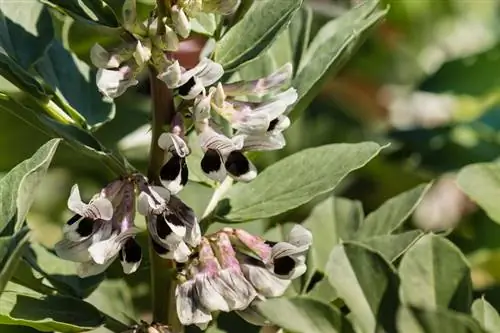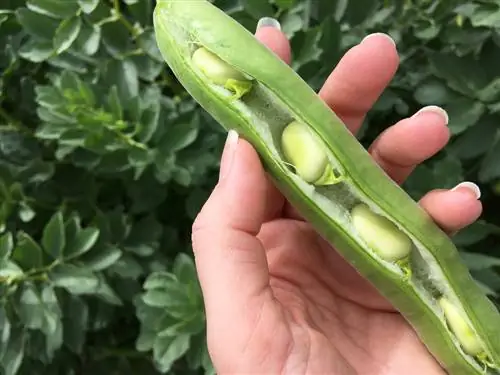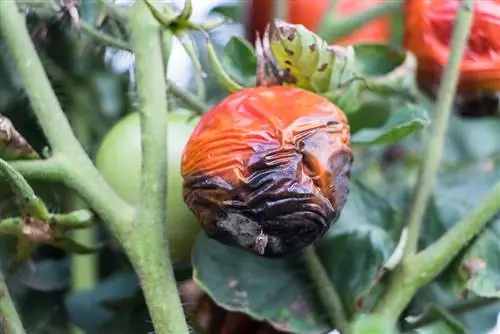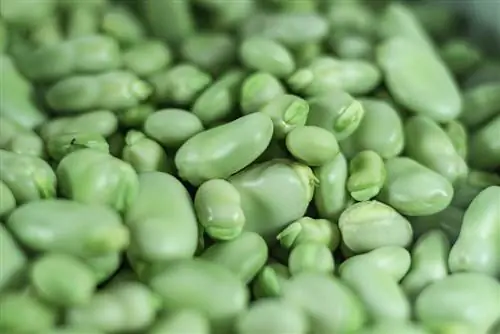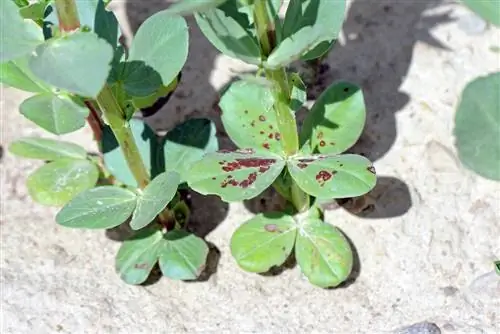- Author admin [email protected].
- Public 2023-12-16 16:46.
- Last modified 2025-01-23 11:22.
The broad beans have just become ripe and are ready to be harvested when you discover black spots on the plants. Unfortunately, you are not alone in this, as it is a relatively common occurrence. You can find out what illness it is, how you can remedy it and whether you can still enjoy the beans here.
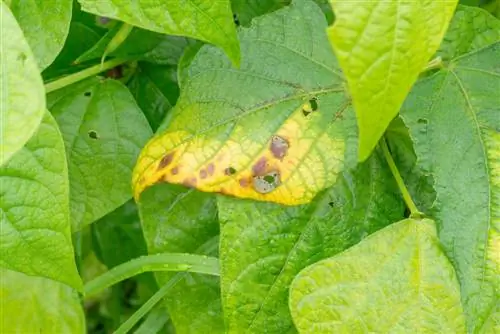
What causes black spots on broad beans?
Black spots on broad beans are usually caused by focal spot disease, which is a fungal infection. Infected beans should not be consumed. Preventive measures include loose planting, watering from above and observing crop rotation.
What causes black spots on broad beans?
The most common cause of black spots on broad beans is the so-calledFocal spot disease This is a fungal infection that is particularly common in humid summers. The brown or black spots can appear on the leaves as well as on the pods and seeds and look like they have been burnt. Some of the spots are already visible before flowering.
Can you still eat broad beans with black spots?
Broad beans infected with follicle disease should no longer be consumed by humans or animals. The diseased seeds are also unusable as seeds and must be disposed of.
What to do if follicle disease occurs on broad beans?
Plants with brown or black spots must becompletely removed and disposed of with household waste. The fungus can survive in dead parts of plants, so infected plants should not be disposed of in the compost.
How can you prevent focal spot disease?
The first measure against focal spot disease is to plant the beansnot too close together. The fungus, like most fungi, reproduces best in moist, warm climates. This is why rainy summer months in particular are the most common time for focal spot disease to occur. Adequate ventilation through loosely positioned plants can help here and ensure that the leaves dry more quickly after rain. In addition, it is recommended to water the plants from below so that the leaves do not get wet. An important preventive measure is also to observe crop rotation and not to plant broad beans in the same bed in successive summers.
Are there other possible causes of black spots on broad beans?
Other diseases that beans can suffer from areBean rustandChocolate spot disease However, both diseases are more likely to manifest themselves in brown rather than black Spots on the leaves, which is why confusion with focal spot disease can be quickly ruled out in most cases.
Tip
It is not unusual for broad beans to turn black
While dark spots and spots on the broad beans are symptoms of illness, a general black coloring of the pods is completely normal. The longer the beans mature on the plant, the darker the initially green pods become. As long as the seeds in the pods are still bright and fresh, they are safe to eat.

